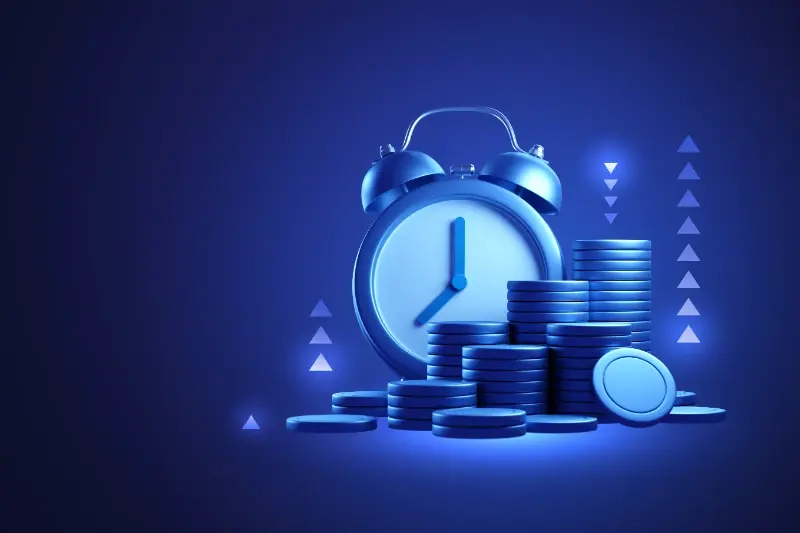Blockchain For Mobile Apps: Cutting Through The Hype
Every few years, a new technology arrives that promises to change everything about how we build mobile apps. Blockchain has been one of the loudest voices in this conversation, with supporters claiming it will revolutionise everything from payments to social media. But here's the thing—after working with clients who've asked about blockchain integration, I've noticed there's often a massive gap between what people think blockchain can do and what it actually delivers.
The mobile app development world loves a good trend. We've seen it with augmented reality, artificial intelligence, and now blockchain. Each time, there's this rush to integrate the latest technology regardless of whether it makes sense for the specific app or user base. Don't get me wrong—blockchain isn't snake oil. It's a legitimate technology with real applications. The problem is separating the genuine use cases from the marketing hype.
The biggest mistake app developers make is trying to solve every problem with blockchain when traditional solutions work perfectly fine
What we need is an honest conversation about where blockchain actually fits in mobile app development. Not every app needs a decentralised database, and not every payment system benefits from cryptocurrency integration. Let's explore what blockchain really brings to the table and when it makes sense to use it in your next mobile app project.
What Is Blockchain Technology?
Right, let's get straight to the point—blockchain is basically a digital ledger that keeps records of transactions across multiple computers. Think of it like a notebook that everyone in a group shares, but once something is written down, it can't be erased or changed without everyone knowing about it.
Each "block" contains a bunch of transaction data, and these blocks are linked together in a chain (hence the name). When someone wants to add a new block, the network of computers has to agree that it's valid. No single person or company controls it—that's what makes it "decentralised".
The Key Features That Matter
After working with various blockchain projects, I've found there are four main features that actually matter for mobile apps:
- Transparency—all transactions are visible to everyone on the network
- Immutability—once data is recorded, it's extremely difficult to change
- Decentralisation—no single point of control or failure
- Security—cryptographic hashing makes tampering nearly impossible
Now, here's where it gets interesting for mobile apps. Blockchain isn't just about cryptocurrency—though that's what most people think of first. It can handle any type of data that needs to be verified and stored securely. The challenge is figuring out when this technology actually makes sense for your app, rather than just adding it because it sounds impressive.
The Reality Behind Blockchain Promises
Let me be honest with you—blockchain has been oversold in the mobile app space. I've watched countless startups pitch "revolutionary" blockchain apps that could've worked just as well (if not better) with traditional databases. The technology isn't magic; it's a distributed ledger that's really good at specific things but terrible at others.
The biggest misconception I see is that blockchain automatically makes everything better. It doesn't. What it does is create a permanent, shared record that nobody can change without everyone else knowing. That's brilliant for some situations but completely unnecessary for most mobile apps.
What Blockchain Actually Delivers
- Permanent records that can't be secretly altered
- No single point of failure or control
- Transparency in transactions and data changes
- Trust between parties who don't know each other
But here's what it doesn't deliver: speed, energy efficiency, or user-friendly experiences. Most blockchain networks are slow compared to traditional databases. They use enormous amounts of energy. And they're often confusing for regular users to understand.
The real value comes when you need those specific benefits—like proving ownership of digital assets or creating systems where no single company has all the power. For everything else, you're probably better off with conventional technology that your users already understand.
Before adding blockchain to your mobile app, ask yourself: do you actually need a permanent, decentralised record, or would a regular database work just fine?
Where Blockchain Actually Works in Mobile Apps
After years of building mobile apps, I've learned to spot the difference between genuine innovation and shiny tech that doesn't solve real problems. Blockchain falls into both categories—it depends entirely on how you use it.
The truth is, blockchain works brilliantly in mobile apps when you need to prove something happened without relying on a central authority. Digital certificates are a perfect example. Instead of trusting one organisation to verify your qualifications, blockchain lets anyone check they're genuine. Supply chain tracking apps use this same principle—scan a product and see its complete journey from factory to shelf.
Apps That Actually Benefit from Blockchain
- Identity verification apps that eliminate fake documents
- Property records that can't be tampered with
- Voting systems that guarantee transparency
- Medical records that patients truly own
- Digital collectibles and gaming assets
What these apps have in common is they all solve trust problems. When multiple parties need to agree on facts without a middleman, blockchain makes sense. But here's the thing—most mobile apps don't have trust problems. They have user experience problems, performance problems, or business model problems. Blockchain won't fix any of those.
The apps that work best with blockchain are often boring. They're not flashy consumer apps; they're practical tools that make verification faster and more reliable.
Common Blockchain Myths in App Development
After years of working with clients who've been swept up in blockchain fever, I've noticed the same myths crop up time and time again. The biggest one? That blockchain automatically makes your mobile app more secure. This isn't true—blockchain is only as secure as the systems built around it, and if your app has poor security practices elsewhere, blockchain won't magically fix them.
Another myth I hear constantly is that blockchain will make your app faster. Actually, it often does the opposite. Blockchain transactions can be slower than traditional databases because they need to be verified across multiple nodes. That's not necessarily a problem, but it's something you need to plan for when building your mobile app.
The truth is, blockchain isn't a silver bullet that solves every problem—it's just another tool in the developer's toolkit
People also think blockchain means their app will be completely decentralised, but most blockchain mobile apps still rely on centralised servers for many functions. The user interface, push notifications, and app store distribution all happen through traditional systems. It's more accurate to say these apps are partially decentralised rather than completely autonomous.
The final myth worth addressing is that blockchain apps are too expensive to build. While they can be more complex, the cost really depends on what you're trying to achieve and how you approach the development process.
Real-World Examples of Blockchain Mobile Apps
Right, let's look at some actual apps that use blockchain properly—not just slapping it on for marketing purposes. I've worked with teams who've built similar solutions, and the successful ones all share one thing: they solve real problems that blockchain is genuinely good at.
Financial and Payment Apps
Coinbase is probably the most straightforward example. It's a cryptocurrency wallet that lets people buy, sell, and store digital currencies. The blockchain handles the security and transactions, whilst the mobile app provides a user-friendly interface. Trust Wallet works similarly but supports multiple cryptocurrencies across different blockchain networks.
Then there's Venmo's blockchain experiments and Cash App's Bitcoin features. These aren't pure blockchain apps, but they show how established companies are integrating blockchain features into existing platforms.
Supply Chain and Authentication
VeChain has mobile apps that let consumers scan products to verify their authenticity. Each product gets a unique blockchain record that can't be faked. This works brilliantly for luxury goods, medicines, and food products where authenticity matters.
- Walmart uses blockchain tracking for food safety—their app lets staff trace contaminated products in seconds rather than days
- De Beers tracks diamonds from mine to retail to prevent conflict diamonds entering the market
- Nike uses blockchain to authenticate limited edition trainers through their mobile app
These apps work because they're solving specific problems: fraud prevention, supply chain transparency, and consumer trust. They're not using blockchain because it's trendy—they're using it because it's the right tool for the job.
The Challenges of Building Blockchain Apps
Building blockchain mobile apps isn't like creating your standard social media or shopping app—trust me on this one! After working with several clients who wanted to integrate blockchain technology into their mobile applications, I can tell you there are some real hurdles that developers face. The main challenge? Speed. Blockchain networks are notoriously slow compared to traditional databases, which can make your app feel sluggish and frustrate users who expect instant responses.
Energy consumption is another massive issue. Blockchain operations require significant processing power, which drains device batteries faster than a leaky tap. This becomes even more problematic for mobile devices where battery life is already a concern. Then there's the complexity factor—blockchain development requires specialised knowledge that many mobile app developers simply don't possess yet.
Common Development Obstacles
- Integration difficulties with existing mobile frameworks
- Limited offline functionality
- High development costs and longer timelines
- User experience challenges with wallet connections
- Regulatory compliance requirements
Storage limitations also pose problems since blockchain data can't be easily modified or deleted once recorded. This means apps need clever workarounds for features users expect, like editing profiles or deleting old content.
Before committing to blockchain integration, prototype the core functionality first to identify potential technical roadblocks early in the development process.
Many developers also face the challenge of adding blockchain to existing apps, which often requires significant architectural changes and can be more complex than building from scratch.
The user experience tends to suffer when blockchain features are poorly implemented, as they can create friction in what should be simple processes.
Conclusion
After eight years of building mobile apps—some with blockchain, most without—I've learned that the technology itself is rarely the star of the show. What matters is whether it actually solves a real problem for real people. Blockchain can do amazing things when used properly; it's just not the magical solution that some people make it out to be.
The apps that succeed with blockchain are the ones that needed its specific features from the start. They're not trying to shoehorn distributed ledgers into every feature—they're using blockchain because centralised systems simply wouldn't work for what they're trying to achieve. That's quite different from adding blockchain just because it sounds impressive.
If you're considering blockchain for your mobile app, start with the problem you're trying to solve. Do you genuinely need decentralisation? Are you handling value transfers that require transparency? Will your users actually benefit from the blockchain features, or will they just make things more complicated? These aren't easy questions, but they're the right ones to ask.
The technology will keep evolving, the tools will get better, and the costs will likely come down. But the fundamental question remains the same: does your app actually need blockchain, or do you just want it to have blockchain? Getting that answer right could save you months of development time and a lot of headaches.
Share this
Subscribe To Our Blog
You May Also Like
These Related Stories

The Hidden Costs of Healthcare App Development Nobody Talks About

The Evolution of App Development Trends and Technologies





